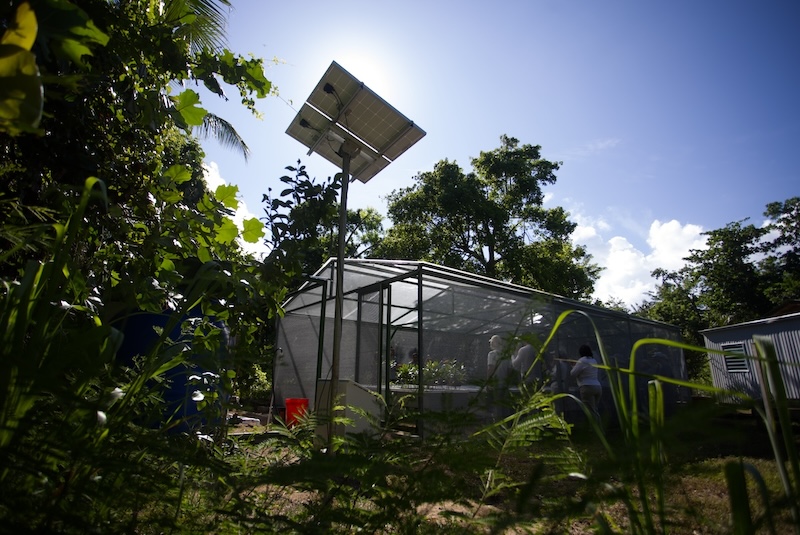It all started with a small experiment when Erik Ruiz, William “Willie” Burgos, and Ahmed Pérez, all members of the Reforestation team of Para la Naturaleza, sought to identify the best conditions for growing mangrove trees. Plastic crates, soil, fresh water, saltwater, and a ruler were enough to determine the growth conditions of the main subject of this research: the red mangrove. It was found that, initially, the red mangrove seedling grows better in freshwater, but later needs saline water to continue its development in a healthy way.
This experiment not only provided basic information on cultivating one of the mangrove species but also led to the creation of a much more comprehensive, self-sustaining project that will enable the production of 4,320 trees per year.
After the results of this makeshift laboratory in the Cabezas de San Juan Nature Reserve in Fajardo, Willie, along with Ahmed, the Superintendent of Reforesting Para la Naturaleza, and Erik, began designing a self-sufficient aquatic plant nursery with the aim of growing red, black, and white mangroves efficiently to reforest designated segments of the Medio Mundo and Daguao Protected Natural Area in Ceiba, and with the mission to expand production to other natural areas of the organization and sell mangroves to the general public.
The new aquatic plant nursery, with a focus on mangrove trees, consists of 6 tanks that can function individually or together, interconnected by a water circulation system using pumps. It also features an oxygenation system that, like the water pump, operates on solar energy. The structure’s roof is made of polycarbonate, a transparent material that allows sunlight to pass through while protecting the salinity of the water in the tanks by preventing rain from reaching them. A removable saran was added to filter the sunlight and channels were installed to collect rainwater and store it in cisterns.
As a result of the experiment, it was observed that in two weeks, the propagules blossomed, and in two to three months, the young trees could be planted. This space will help speed up production and will allow mangrove trees to be grown year-round. All of this aims to continue contributing to the reforestation and habitat restoration of the Puerto Rican archipelago.





